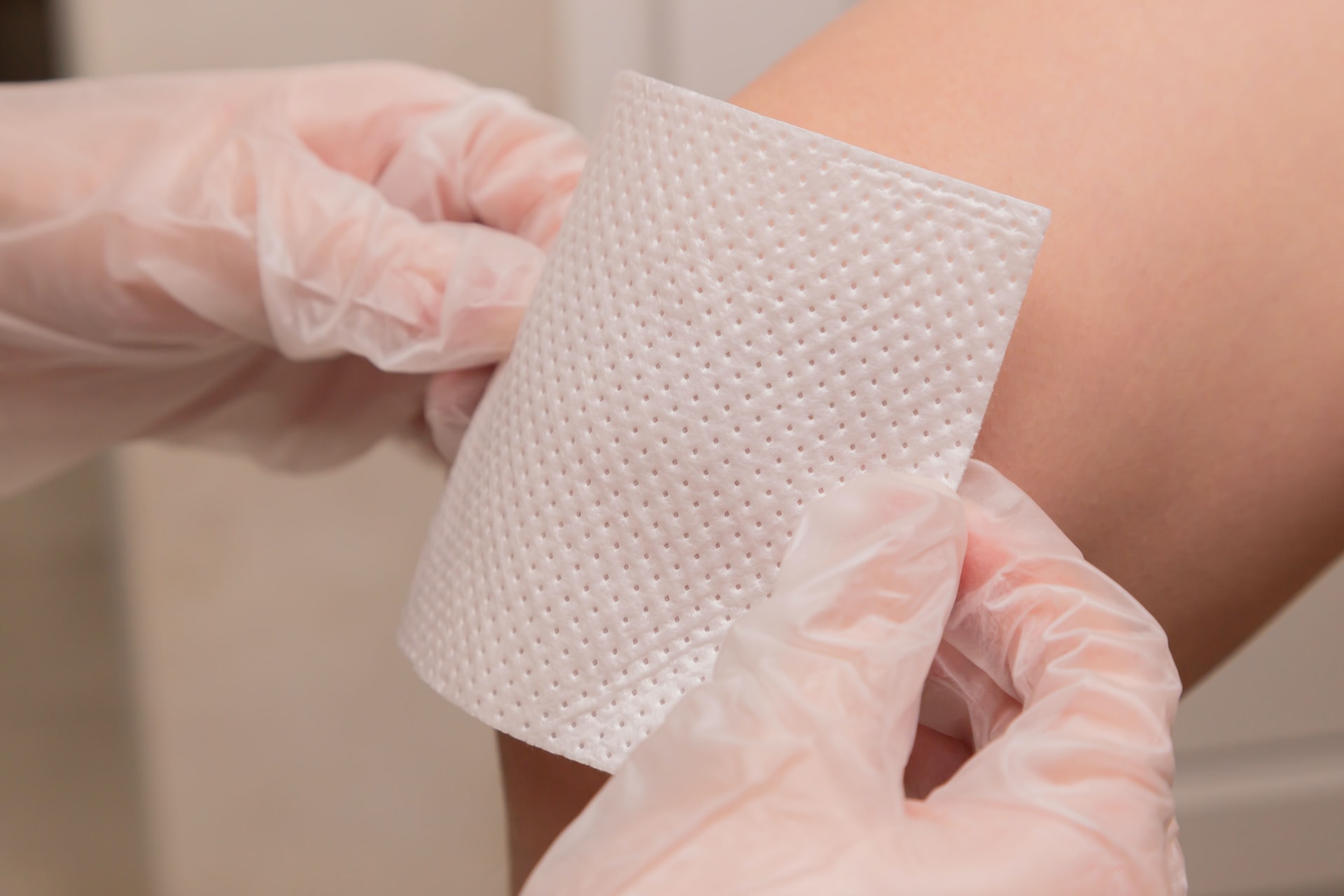
Difficult-to-heal wounds result from different factors, including, but not limited to, disruption from tissue loss, comorbid disease states, and inadequate blood flow. These wound types require wound care specialists to incorporate an extra component into their management, such as wound biologics (or skin substitutes). Understanding different types of skin substitutes, their benefits, and precautionary considerations enable professionals to identify the ideal skin substitute for several types of chronic and difficult-to-heal wounds.
What are Skin Substitutes?
Skin substitutes are artificial or biological materials that provide temporary or permanent coverage to exposed skin wounds. With time, these materials can restore skin functionalities to the affected wound patient.
Since the skin is the largest organ in the human body and constantly interacts with the external environment, it is susceptible to damage or wounds. Thus, skin substitutes are necessary for adequate wound healing, depending on the wound severity.
In addition to expediting the wound healing process, professionals can minimize complications with skin substitutes in several types of wounds, such as pressure ulcers, burns, skin disorders, ischemia, and trauma.
Skin substitutes replicate the properties of normal functioning skin and enable auto-regenerative healing when professionals apply them to the wound over an extended period.
Researchers have dedicated a significant number of decades to developing these materials. Thus, they can currently provide efficient solutions for difficult-to-heal wounds when wound care professionals apply them in an optimized setting.
Types of Skin Substitutes
Skin substitutes can either be temporary or permanent. While the temporary skin substitutes provide an ideal wound healing environment through moisture optimization and protection from the external environment for up to four weeks before removal, the permanent ones remain on the wound site, improving skin quality at the site.
Temporary Skin Substitutes
Natural and synthetic skin substitutes are the two common sub categorizations of temporary skin substitutes. As the names imply, the natural skin substitute is material from processed and prepared live cells, while the synthetic is artificial and meets specific wound requirements.
Some types of natural skin substitutes include human amnion, human allograft, pig xenograft, and Oasis wound matrix. Human amnion, a membrane covering a fetus inside a womb, is another temporary substitute ideal for burns and other superficial ulcers.
Human allograft, widely recognized as the most preferred skin substitute, is skin from human cadavers containing the epidermal and dermal layers for temporarily covering large wounds. The pig xenograft (or pig skin) is ideal for partial thickness burns before skin grafting.
Oasis wound matrix is a natural skin substitute comprising small intestinal wall-based mucosal cells that are ideal for hard-to-heal non-burn wounds, donor skin graft sites, and superficial burn wounds.
Conversely, two common types of synthetic skin substitutes include Biobrane and TransCyte. Biobrane consists of a thin silicone layer with pores and an inner triple layer with a water layer. The pores allow for exudate removal and antibiotic application, while the water layer provides a moist environment for adequate wound healing.
TransCyte, on the other hand, includes a double-layered non-pored outer silicone layer and a neonatal human foreskin fibroblast-lined inner layer, which is ideal for temporary wound closure before skin grafting.
Permanent Skin Substitutes
Some permanent skin substitutes include Epicel, Alloderm, and Integra. Epicel (or cultured epithelial autograft (CEA)) is a permanent skin substitute from a cultured skin biopsy of the outer skin layer of the patient. This skin substitute type provides a permanent skin covering for burn patients who require coverage for up to 30% of the total body area.
Alloderm comprises a treated dermis layer of the human cadaver skin ideal for addressing soft tissue defects and deep burn wounds. Similarly, Integra comprises an inner dermal analog layer for joining existing wound cells, promoting cell growth, and building new blood vessels.
Benefits of Skin Substitutes
Skin substitutes accelerate wound healing and minimize infections, complications, and dehydration. These materials also offer cosmetic benefits and maximize the functionality and flexibility of wound sites.
Skin substitutes are ideal for non-healing or difficult-to-heal wounds, including vascular insufficiency ulcers, diabetic neuropathic ulcers, and pressure ulcers. The high morbidity, infection, amputation and even mortality rate of these wounds inform the need for health care professionals to incorporate skin substitutes into their treatment.
Other benefits of skin substitutes include:
- Accelerated wound closure
- Increase in growth factors
- Fibroblast formation facilitation
- Angiogenesis; accelerate blood vessel formation
- Aids the formation of endothelial cells
- Formation of extracellular collagen matrix
What are the Indications for Leveraging Skin Substitutes?
Professionals are more likely to consider skin substitutes for patients with superficial, partial, and deep burn wounds. Moreover, chronic and non-healing wound patients and skin graft donors are ideal candidates for skin substitutes.
Other indications for incorporating skin substitutes into wound healing include:
- Partial Thickness Burns
- Diabetic Foot Ulcerations
- Acute / Chronic Wounds
- Venous Stasis Ulcerations
- Traumatic Wounds
- Arterial Ulcerations
Considerations for Using Skin Substitutes
Professionals and patients must consider several factors when using skin substitutes to ensure they achieve the required results. Patients must minimize undue movement of the affected skin area, especially within the first couple of weeks, to allow for proper integration and healing.
Moreover, adherence to medication and treatment therapies, adequate nutrition, and proper wound care is essential for expediting the wound healing process.
Bottom Line
Although recovery with skin substitutes varies from one patient to another due to several factors, such as wound size and depth, medical history of the patient, and the overall health condition, these materials play significant roles in wound healing. From providing a moist healing environment to fibroblast formation and angiogenesis, wound substitutes are modern-day solutions for difficult-to-heal wounds.

Tags





.jpg)


.jpg)

.jpg)








